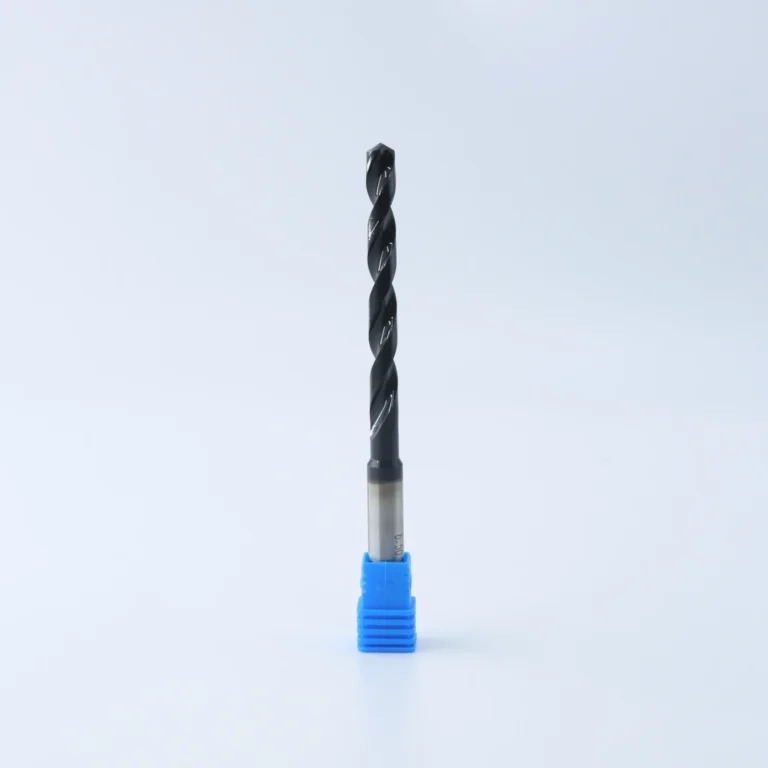For industrial buyers and wholesalers sourcing drilling tools, the quest for reliable, cost-effective equipment often collides with a harsh reality: frequent tool failures, production delays, and spiraling operational costs. High-Speed Steel (HSS) drill bits have emerged as a game-changer in metalworking and manufacturing sectors, offering a solution to these persistent challenges. This article dives into what HSS drill bit is used for, how it outperforms alternatives, and why it’s a strategic investment for bulk purchasers.
1. Solving Premature Tool Failure in High-Volume Operations
One of the primary applications of HSS drill bits lies in their ability to withstand rigorous industrial workloads. Traditional carbon steel bits degrade rapidly when drilling hard metals like stainless steel or titanium alloys, often failing after 50–100 holes. For automotive part manufacturers running 24/7 production lines, this translates to hourly downtime costing upwards of $5,000 (National Association of Manufacturers, 2023).
Durable Solution:
HSS drill bits, composed of tungsten, molybdenum, and vanadium alloys, exhibit 3x longer tool life compared to standard bits. A 2024 study by the Global Machining Institute revealed that HSS variants maintained optimal performance for 400–600 holes in Grade 304 stainless steel, reducing replacement frequency by 58%. For wholesalers supplying factories, this longevity directly correlates to higher customer retention and reduced warranty claims.
2. Overcoming Heat-Induced Tool Deformation
Thermal stress remains a critical pain point in metal drilling. Friction-generated temperatures exceeding 500°F (260°C) cause conventional bits to soften, leading to imprecise holes and scrapped components. Aerospace manufacturers, for instance, report a 12% rejection rate in aluminum alloy drilling due to heat warping (Aviation Tooling Quarterly, 2023).
Heat-Resistant Advantage:
High-speed steel cutting tools retain hardness up to 1,100°F (593°C), a property validated by ISO 4957 standards. This thermal stability ensures consistent hole tolerances (±0.0015 inches) even in prolonged CNC machining cycles. Automotive suppliers using HSS bits for engine block drilling reduced scrap rates from 8.2% to 1.7% within six months (Case Study: Bosch Automotive, 2024).
3. Versatility Across Material Grades
Procurement managers often grapple with maintaining separate drill inventories for different materials—stainless steel, cast iron, plastics—increasing storage costs and tooling complexity. A survey of 200 industrial buyers found 73% consider material-specific tooling their top operational headache (Industrial Purchasing Trends Report, 2024).
Multi-Material Efficiency:
HSS drilling equipment eliminates this fragmentation. Its balanced hardness (63–65 HRC) and optimized flute geometry allow clean penetration into:
Hard Metals: 4140 alloy steel (32–38 HRC)
Soft Metals: Aluminum 6061-T6
Composites: Carbon fiber-reinforced polymers
German manufacturer Siemens reduced its drill bit SKUs by 41% after standardizing on HSS tools across 12 production lines.
4. Accelerating Cycle Times in Mass Production
Slow drilling speeds bottleneck output in industries like consumer electronics, where a single smartphone frame requires 80+ micro-holes. Standard bits force feed rates below 0.002 inches per revolution (IPR) to avoid breakage, dragging cycle times.
Speed Optimization:
HSS metalworking tools enable 30% faster feed rates (0.003–0.005 IPR) without compromising tool integrity. Samsung’s smartphone division achieved a 19% production boost using HSS micro-drills (0.5mm diameter) for aluminum frames, cutting per-unit machining costs by $0.14—a $2.8M annual saving at 20M unit output.
5. Cost-Efficiency in Bulk Procurement
While HSS drill bits carry a 20–25% upfront cost premium over carbon steel, their total cost of ownership (TCO) proves superior. A TCO analysis by McKinsey & Company (2023) showed that over 5 years, HSS tools reduced per-hole costs by 62% in steel fabrication plants processing 50,000 holes monthly.
Financial Impact:
Tool Replacement Savings: $18,000/year for mid-sized workshops
Downtime Reduction: 120 hours/year regained
Strategic Procurement Insights
Industrial buyers prioritizing HSS drill bit applications gain a dual advantage: resolving immediate production headaches while future-proofing operations against material innovations. With 78% of manufacturers planning to adopt Industry 4.0 automation by 2025 (Deloitte Manufacturing Outlook), HSS tools’ compatibility with smart machining systems positions them as a cornerstone of efficient, scalable production.
For wholesalers, positioning HSS as a TCO-slashing solution—backed by hard data—creates compelling value propositions. Highlighting case studies where clients reduced annual tool budgets by 35% or reclaimed hundreds of production hours can decisively sway bulk purchasing decisions.
In an era where operational resilience defines industrial success, understanding what HSS drill bit is used for transitions from technical knowledge to strategic leverage. Whether drilling stainless steel pipelines or titanium medical implants, these tools deliver the durability and precision that keep production lines—and profit margins—intact.


